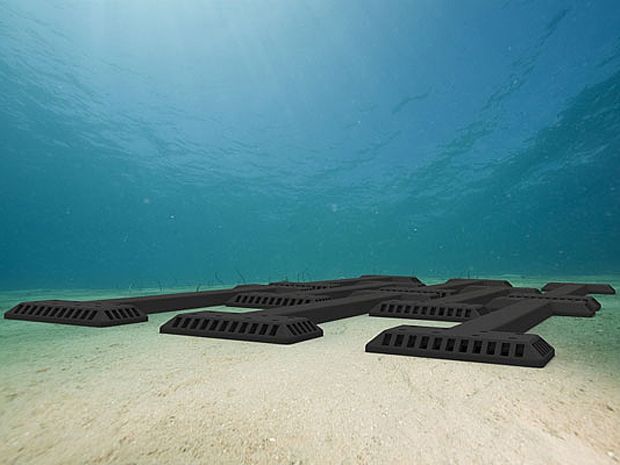Two New Ideas in Wave and Tidal Power
Posted by Big Gav in ocean energy, renewable energy, tidal power, wave power
IEEE Spectrum has an article on some new ocean energy technologies - Two New Ideas in Wave and Tidal Power.
The wave power idea is closer than the tidal energy one to rollout, with a planned open-water test for this summer. M3 Wave dispenses with all the problems that come with buoys or other above-and-below-the-surface designs by mooring a simple device to the ocean floor. The device, pictured above, involves two air chambers: as a wave passes over the top of the first chamber, the pressure inside increases, forcing air through a passageway to the second chamber. Inside the passageway is a turbine, so the passing air is actually what generates the electricity. As the wave continues on, it raises the pressure inside the second chamber, pushing the air back through the turbine—importantly, it is a bidirectional turbine—and back into the first chamber. Another wave, another cycle. Repeat.The primary selling point here is its simple and small footprint. There is no impact on ocean view, on shipping or fishing traffic, and rough seas above won't endanger the system in any way. M3 is selling it as "expeditionary" wave power, meaning it might be brought along on a ship and deployed for things like disaster relief; the company suggests such a deployment could produce 150 to 500 kilowatts. The system will undergo open-water testing at a U.S. National Guard facility, Camp Rilea in Oregon, in August.
On the other side of the country, a group at Brown University has developed what they call an oscillating hydrofoil, intended to minimize some of the impacts of tidal power devices and increase efficiency. The hydrofoil is mounted on to the sea floor—it resembles a car's spoiler attached to a pole, essentially. As the water flows past that spoiler it oscillates, generating electricity. It is designed so that the pole can actually fold down and out of the way if necessary, allowing for ships or even wildlife (detected with sensors on the device) to pass by without incident. The team received US $750 000 in funding from ARPA-E in 2012, and will soon move to a phase II involving a medium-scale, 10-kw prototype. They have calculated that the device can achieve much better energy conversion efficiencies in tides flowing very slowly than any of the devices that are on or close to market.






